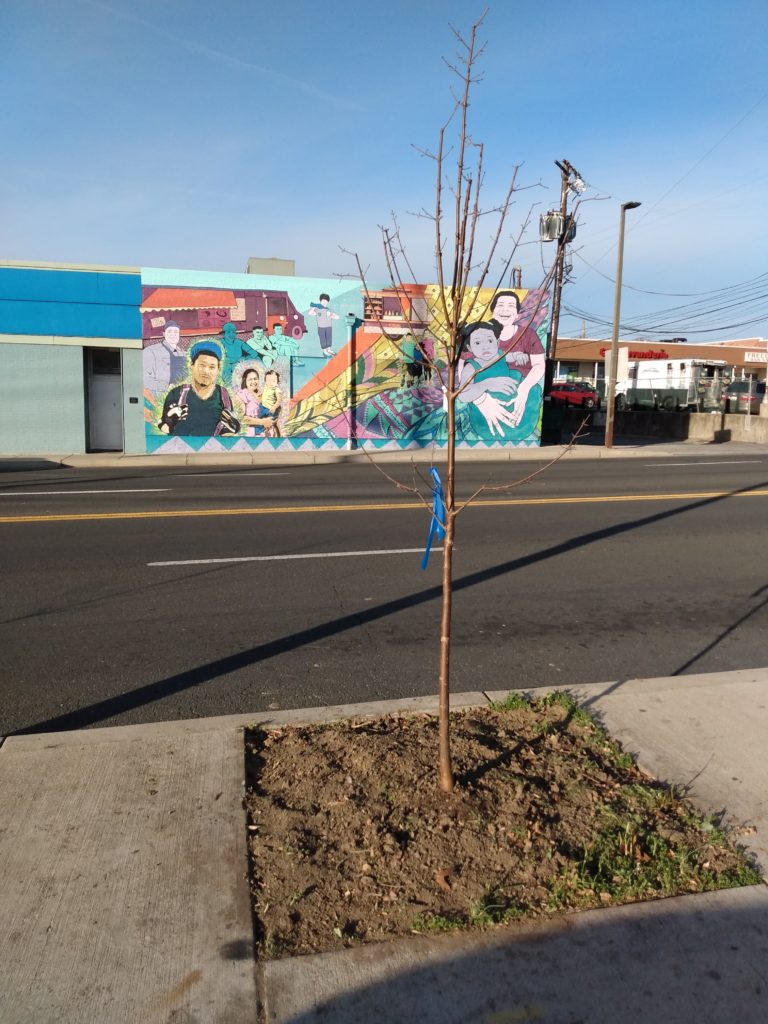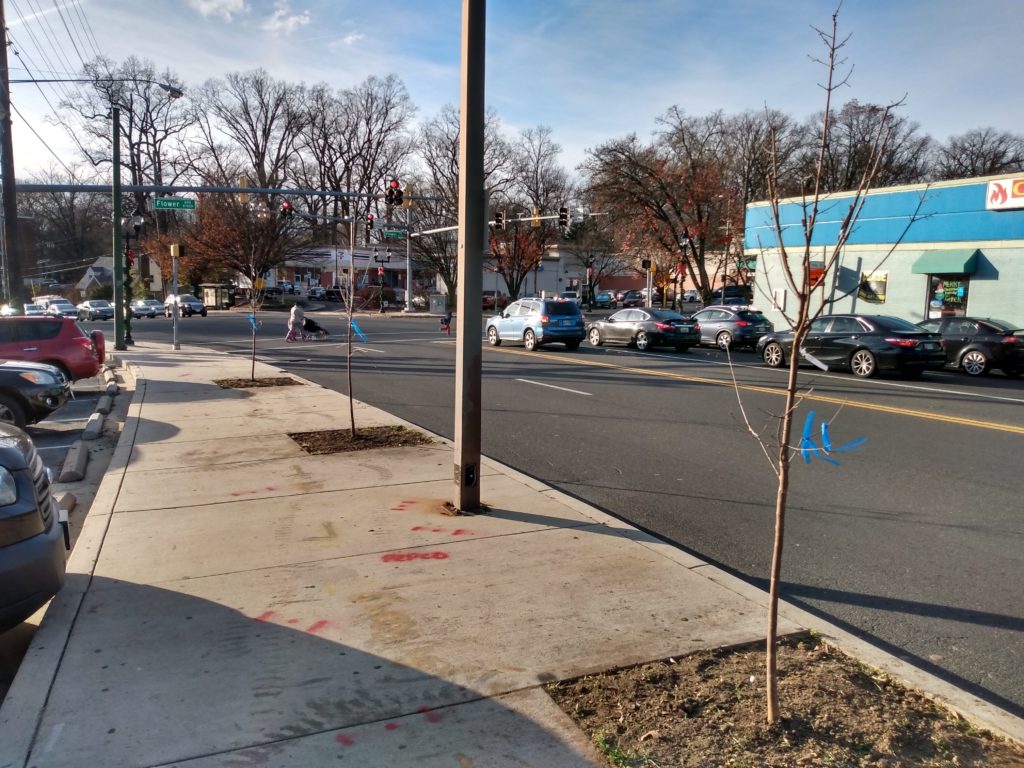December 22nd, 2020
A Tree Grows in Long Branch

When five new street trees were planted in downtown Long Branch this December, it was both the end and the start of a longer process.
The process that concluded Dec. 1st with the tree planting had been set in motion several months earlier. MHP and the Long Branch Business League (LBBL) have long wanted to do something about all the empty tree boxes that create an eyesore in downtown Long Branch, but planting trees is not as easy as it sounds. Not if you want to do it right. And MHP and the LBBL definitely wanted to do it right – for reasons we will get into in a moment.
Among multiple other steps – testing the soil, clearing out roots and sundry metal objects, getting clearance from utilities — the non-profit MHP also consulted with professional arborists to find out which were the right species to plant.
The trees selected would have to fit specific constraints. The trees on Piney Branch Rd. needed to be small enough to stay clear of overhead wires and not get clipped by passing buses.
On Flower Ave., there are no overhead wires. On the other hand, the tree boxes are small, which limits water and oxygen penetration to tree roots, which, in turn, can make it harder for a large tree to flourish.
In the end, it was decided to plant flowering Japanese lilac trees on Flower Ave., and paperbark maples on Piney Branch. Neither species is expected to grow much beyond twenty feet tall. The Parks department provided all the trees to Long Branch at zero cost, and were kind enough to even deliver them.
Though the preparation took months, thanks to O & O Tree Service, hired for the occasion, the process of actually planting the five trees with their heavy root balls took only a few hours.
December’s tree planting was also only the first step in a longer process – that of replacing the rest of downtown Long Branch’s street trees.
Why do they need to be replaced? The short answer? Bradford pears.
Sadly, most of commercial Long Branch’s street trees are Bradford pears. When the USDA started promoting this cultivar back in the 1960s, they seemed the perfect solution for expanding suburbia. They are inexpensive, grow fast, and produce lovely, showy white blossoms every spring. They were massively planted all over the country.
Within a few years, however, it turned out these pretty critters have a dark side. They are fragile — their branches easily break off and can be dangerous. Furthermore, their lifespans are short — a few decades merely. And to top it off they are aggressively invasive.
The Bradfords in Long Branch are now at the end of their life cycle so even those apparently still in good shape will not survive much longer.
Which tree, over the next few years, will — or should — replace them?
It’s an interesting question. It could be more of the same ones that were just planted – the Japanese lilacs and paperbark maples. On the other hand, if the existing tree boxes can be expanded in size, larger trees that make more of an architectural statement could also be chosen – except in spots crowded by overhead wires, of course. (It should be added that some arborists think that even without the expanded tree boxes larger trees can still be a viable option.)

A wit once wrote of Southern California: ‘A few leaves fall, they open a bottle of champagne, and they call it winter.’
Winter in Long Branch is a very different affair, including in the tree department. Unlike Hollywood’s pampered palm trees, Long Branch’s poplars, oaks and maples are deciduous. They face all the seasons of life.
After surviving the hot summer and windy autumn, their prolific leaves fall tumbling to the ground, their trunks and angular branches left bare and exposed. Then they go into hibernation. Their skeletal silhouettes, accentuated by the waning December light, remind us of death and decline.
Then, starting from Dec. 22, which happens to be today, the days start growing longer again. Winter, it turns out, does come to an end. By spring, the trees are in blossom again. Such is the cycle of life.
What, though, of Long Branch’s small shops and shuttered restaurants? Will they also survive this unprecedented winter? Indeed, for many Long Branch business owners the accursed year 2020 has for many months now felt like a winter that will never end. Will our December 1st tree planting prove symbolic of their own capacity for self-renewal?
The answer, almost certainly, is yes. And yet, our small stores have this in common with growing trees. Hardy as they generally are, after enduring a long drought they need some extra TLC.
[Want to get involved in future plantings, share your thoughts about new trees in Long Branch? We welcome your involvement! Write Paul at pgrenier@mhpartners.org]




